
Corsica ranks among the Mediterranean’s most attractive travel destinations, seducing visitors with its pristine landscapes, fascinating culture and an irresistible southern charm. Yet, unlike many other islands in the region, it isn’t your typical summer holiday hotspot. Knowing what not to expect is just as important as understanding what awaits- insights that will make your stay more enjoyable and authentic.
This guide highlights the aspects of Corsica that often surprise first-time travellers or challenge common assumptions, helping you navigate the island with ease and confidence.
So, what shouldn’t you expect in Corsica?
PLANNING A TRIP TO CORSICA? CHECK OUT THESE RESOURCES!

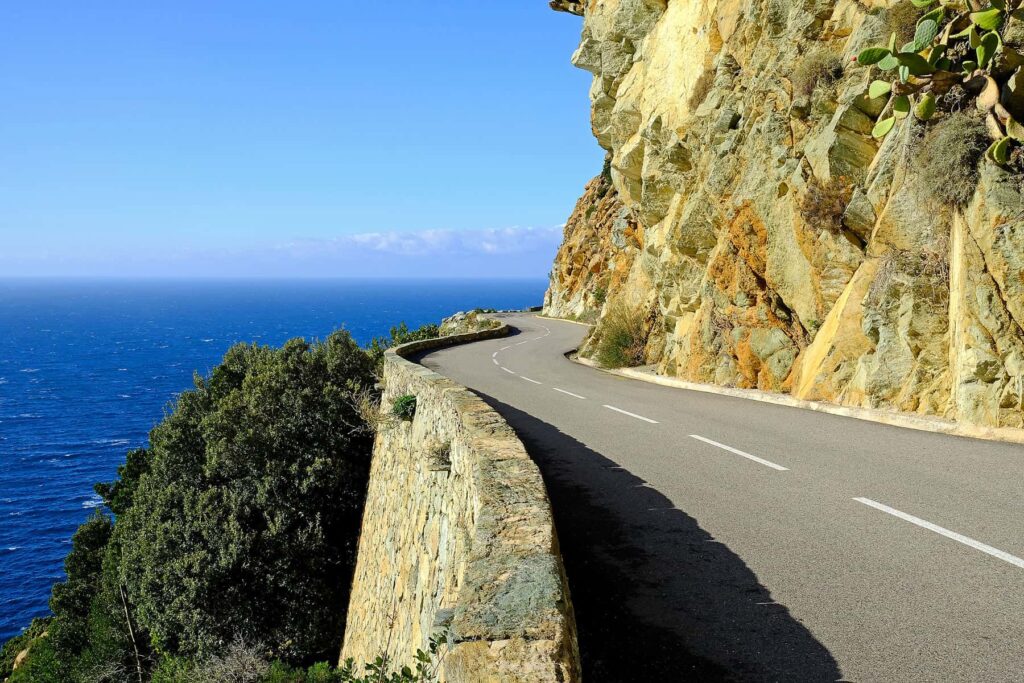
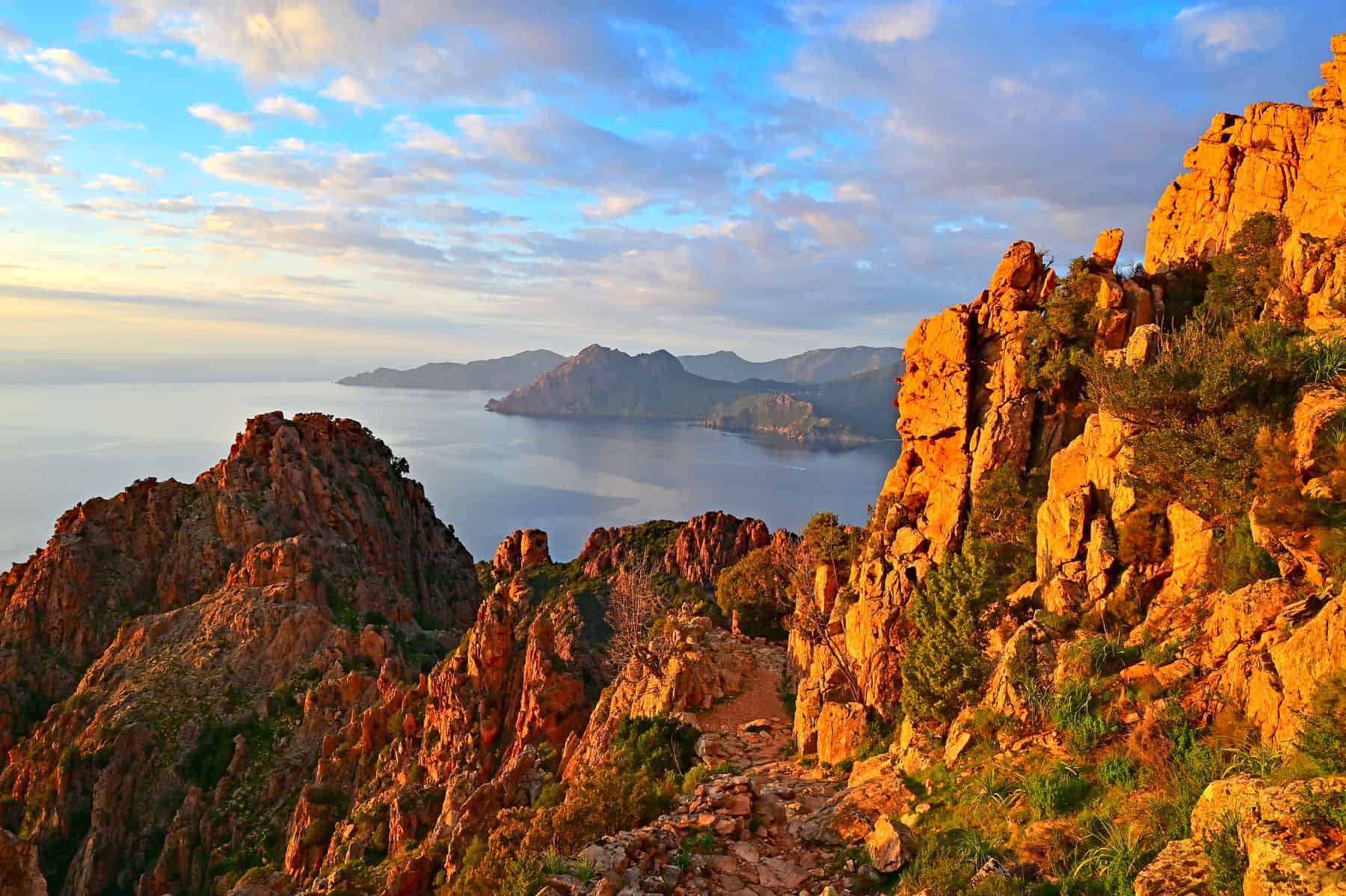
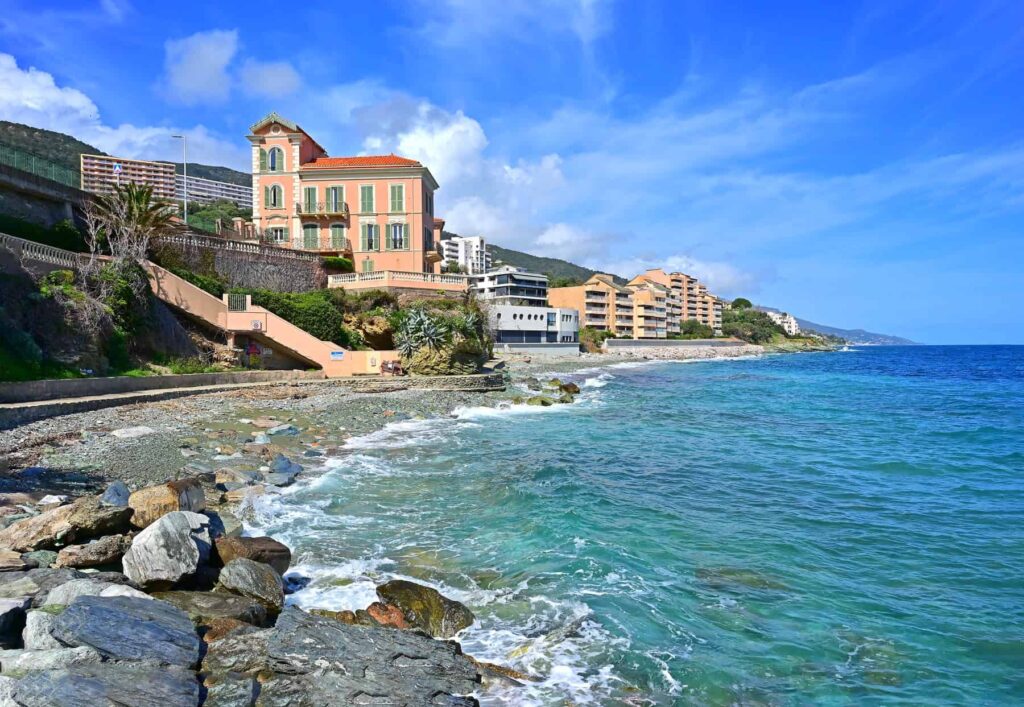
1. DON’T EXPECT A TYPICAL MEDITERRANEAN RESORT ATMOSPHERE
Corsica isn’t like any other island in the Mediterranean. It has its own fierce character, with rugged, largely protected landscapes and a culture that feels completely unique. Officially, it is part of France, but as soon as you arrive, you’ll also notice deep Italian influences everywhere, from the food to the way of life.
What makes Corsica stand out even more are its traditions- mysterious polyphonic singing, vibrant religious feasts, deep-rooted pastoral customs, and a language of its own. So if you’re expecting just another summer beach resort, you’ll be surprised. The Island of Beauty is more about adventure, dramatic scenery, and a proud nation whose history has been anything but simple. It’s the kind of place that leaves a lasting impression, tempting you to discover more with each visit.

2. DON’T EXPECT MASS TOURISM
Compared to many other Mediterranean destinations, Corsica feels far less developed and much less crowded. Here, you won’t find sprawling all-inclusive resorts as the island has successfully avoided mass tourism.
Instead, its coastline remains largely wild, engulfed with fragrant maquis, while the mountainous interior is mostly protected as part of the Regional Natural Park. In fact, about 40% of Corsica’s surface is under protection, something locals are deeply proud of, as caring for their cherished land is central to their identity.
Tourism on the island is discreet and low-key, sometimes quite luxurious, but always in a laid-back, unpretentious way. Instead of apartment blocks, you will find small hotels, cosy residences, and peaceful holiday rentals that draw visitors who seek nature, tranquillity, and a more authentic kind of escape.
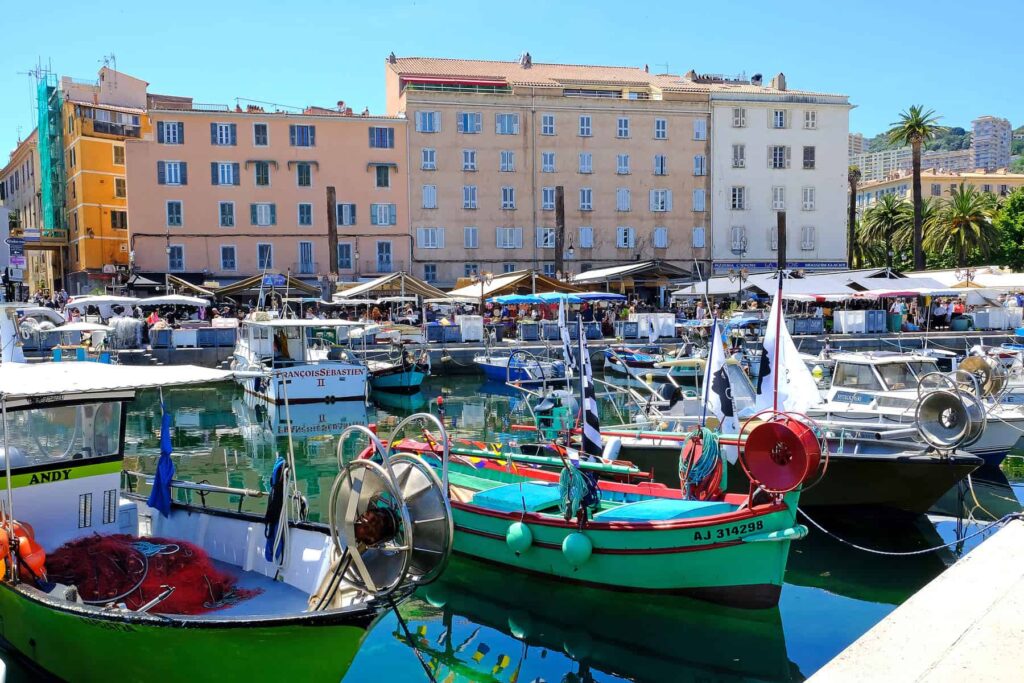
3. DON’T EXPECT LARGE CITIES
Corsica is very much an island of small towns and charming villages, with only two cities exceeding 40.000 inhabitants. The overall population of about 350.000 is spread across the whole territory, giving it a distinctly remote feel.
The largest urban centre is Corsica’s colourful capital, Ajaccio, home to only around 70.000 residents. Bastia, in the northeast, is the second largest town. Both serve as key ferry ports and have airports, making them the main gateways to the island, yet they remain small enough to be explored comfortably on foot. Upon your arrival, you won’t find the hectic pace of big cities; instead, you will be greeted with a relaxed vibe and slower rhythms of provincial living.
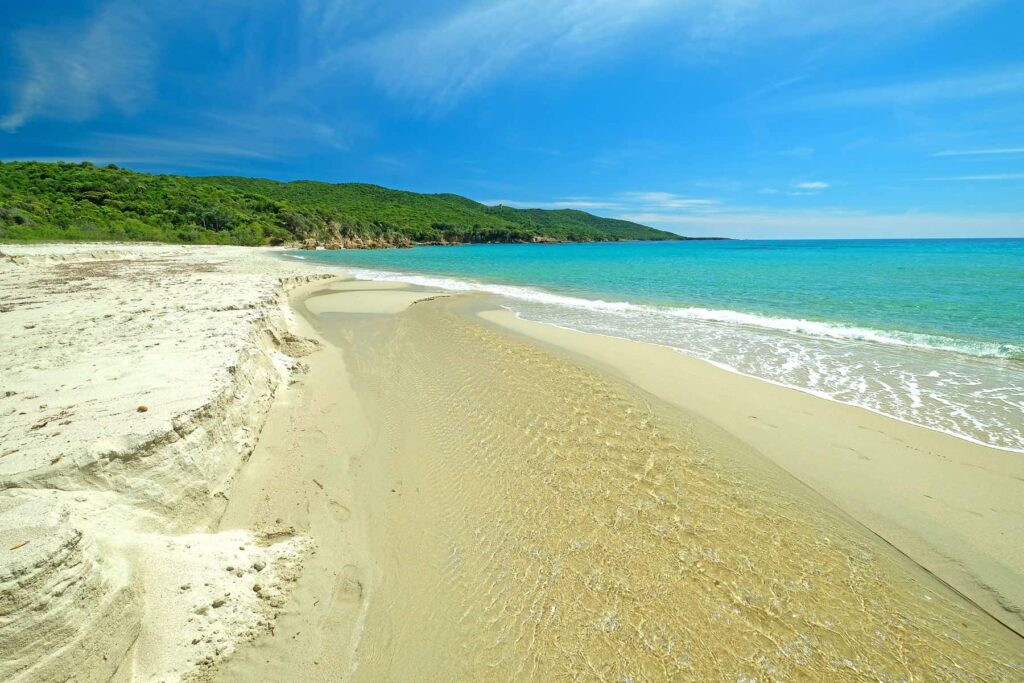
4. DON’T EXPECT BEACHES LINED WITH SUNLOUNGERS
Corsican beaches, often ranked among the world’s most beautiful, are celebrated for their wild, paradisiacal shores free of the long rows of sunbeds and crowded promenades you will find in more commercialised destinations. Much of the coastline is still untouched, with more than 200 coves of white sand or smooth pebbles, framed by fragrant Mediterranean scrubland, and lapped by turquoise seas.
The ambience is simple and authentic- you can lay your towel directly on the sand, swim, snorkel, and enjoy the pristine scenery without the usual noisy bustle of summer resorts. Beaches like Lotu, Saleccia, Cupabia, Roccapina, or Grand Sperone remain almost completely free of facilities, while the well‑known Plage de Palombaggia and Santa Giulia offer all essential services. Even there, however, sunbeds are confined to areas near beach restaurants, leaving most of the shoreline free and unspoilt.
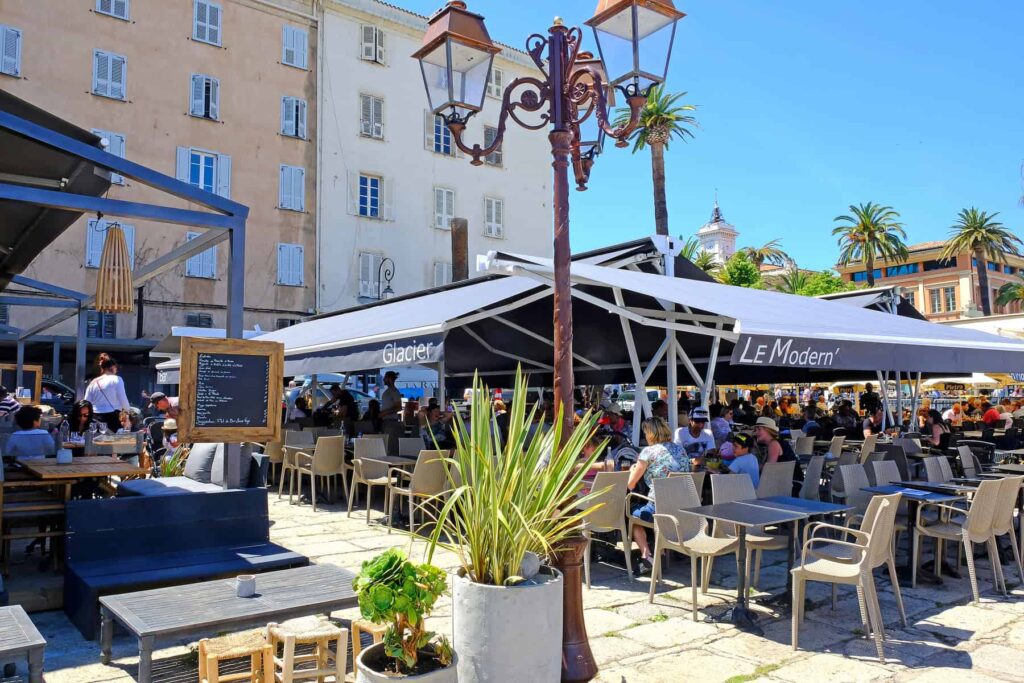
5. DON’T EXPECT BUZZING NIGHTLIFE
Although Corsica does offer some nightlife opportunities in its key towns, it has never been known as the party island or the go‑to destination for those looking to dance until sunrise. Evenings here are calm and relaxed, with social life revolving around cafés and restaurants. The ever-present convivial atmosphere is perfect for anyone seeking a break from the busy everyday life.
That said, Corsica does know how to celebrate. The events calendar is filled with numerous lively festivals and feasts, from traditional gatherings with folk or classical music to contemporary events like Calvi on the Rocks, where international DJs sound the electrifying vibe by the sea. Towns such as Porto‑Vecchio, Bonifacio, and Ajaccio also have open‑air clubs and stylish lounges, but even there, nightlife tends to be intimate and laid back rather than wild or flashy.
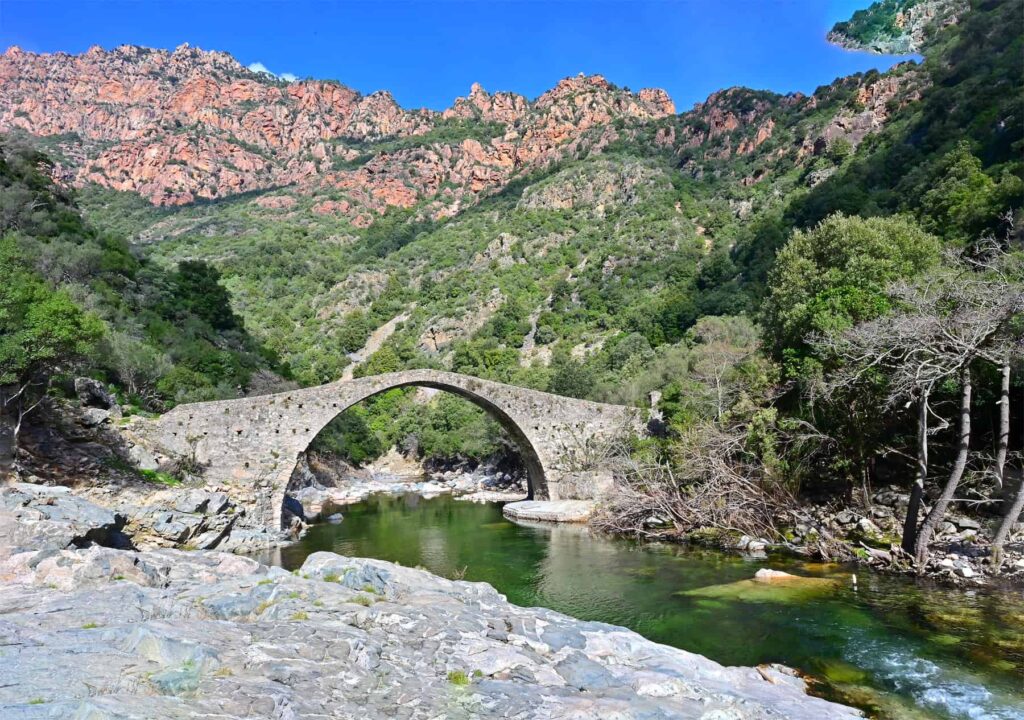
6. DON’T EXPECT UNIFORM LANDSCAPES
Corsica’s landscapes are strikingly diverse, changing dramatically within the span of just an hour’s drive, from sun-soaked beaches on the coast to majestic peaks in the island’s interior. Often described as a ‘mountain in the sea’, Corsica is dominated by dramatic ranges, with Monte Cinto reaching 2706 meters. In spring, the summits can still be capped with snow, dominating ancient forests below, such as Vizzavona and Aitone, deep river valleys, and crystalline emerald streams.
Along the coastline, the scenery changes again, revealing shimmering sandy beaches, hidden rocky coves, and sheer cliffs that drop into the Mediterranean. Places such as the wild Scandola Reserve or the red-hued sculptures of Calanches de Piana stand in striking contrast to the calm, shallow waters of the Calvi beach.
This remarkable variety is mirrored in Corsica’s flora and fauna, with protected habitats home to rare species and thriving local ecosystems.
For travellers seeking variety and outdoor adventure, Corsica is hard to rival in the Mediterranean. Some even call it a miniature New Zealand, where spectacular beauty seems to unfold in every direction.
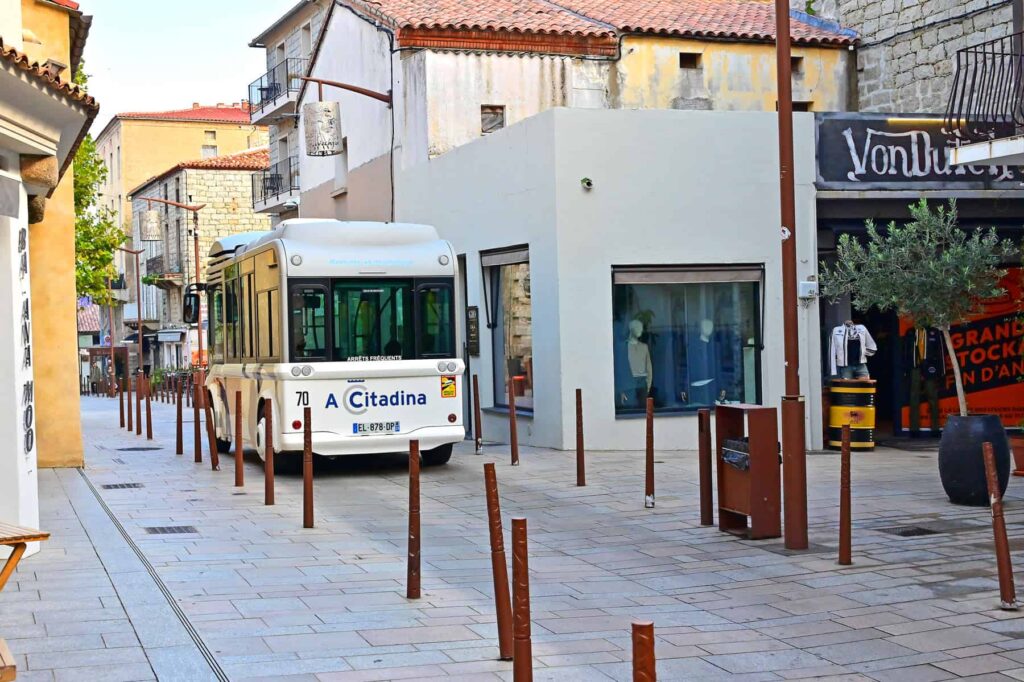
7. DON’T EXPECT A WELL-DEVELOPED PUBLIC TRANSPORT NETWORK
If you want to explore Corsica in depth within a reasonable time period, whether it’s the well‑known highlights or its hidden corners, having a car is almost essential. Public transport does exist, but the options are somewhat limited and become even scarcer outside the summer season. Buses (https://www.corsicabus.org/, https://www.transbus.org/reseaux/20.html) connect the main towns such as Ajaccio, Bastia, Porto Vecchio and Calvi, yet services are infrequent, particularly in winter. The island also has a small but scenic rail network (https://cf-corse.corsica/horaires/), which links places such as Bastia, Corte, Ajaccio, and Calvi, although its coverage remains modest. Taxis are available, but they can be prohibitively expensive for longer journeys.
While it’s certainly possible to travel car‑free if you plan carefully and stick to major hubs, the freedom of your own four wheels makes a huge difference. Renting a car opens up the island’s rugged interior, remote beaches, and mountain villages that public transport simply doesn’t reach, allowing you to experience Corsica’s diversity at your own pace.
I wrote two articles that will help you plan and organise your trip if you wish to explore the island without a vehicle. They offer practical tips and essential information on how to get around using public services, as well as recommendations on where to stay for a smooth and memorable vacation:
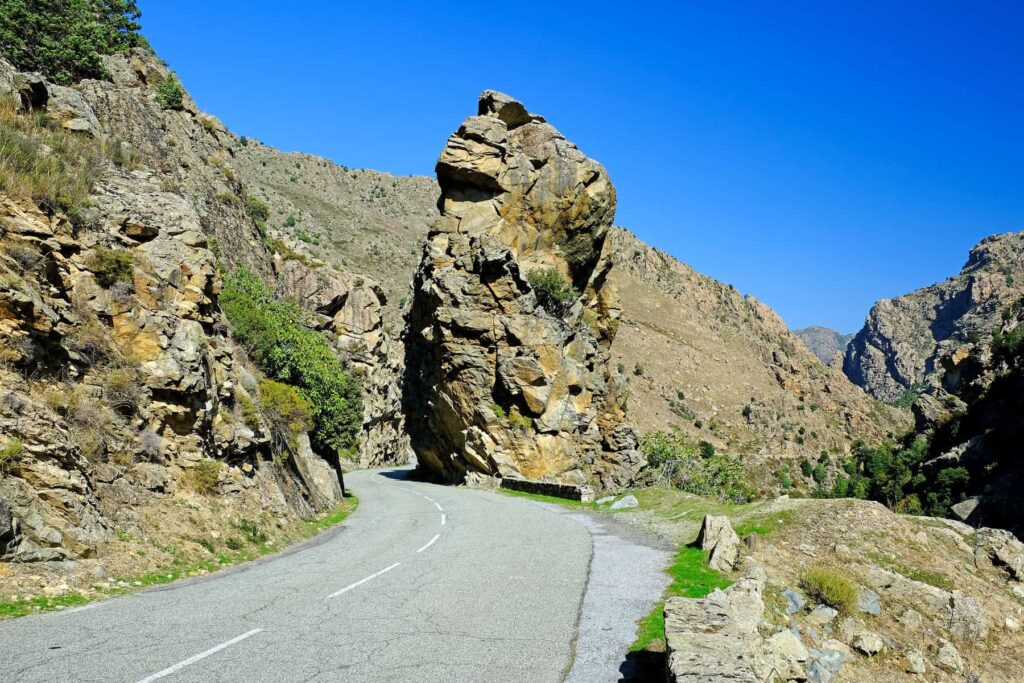
8. DON’T EXPECT FLAT, STRAIGHT ROADS
Don’t expect Corsica’s roads to be flat or straight, except for the Eastern Plains stretch between Bastia and Bonifacio. For the most part, they wind through the jagged, mountainous terrain that gives the island its character. Driving here means tackling narrow, twisting lanes with sharp bends as the routes cling to hillsides, drop through deep valleys, and climb over mountain passes. Caution and heightened attention are key, not least because you’ll often be sharing the road network with free‑roaming cows, goats, or even pigs.
Most paved routes are in good condition, but some of the smaller, secondary ones can be rougher, with occasional bumps or a pothole. What they do offer, however, are unmatched views, as Corsica boasts some of the most spectacular scenic drives in the Mediterranean. Classics include the Bavella Pass route, the spectacular Calanches de Piana drive, or the winding ascent into Asco Valley, perfect for travellers who see the journey itself as part of the adventure.
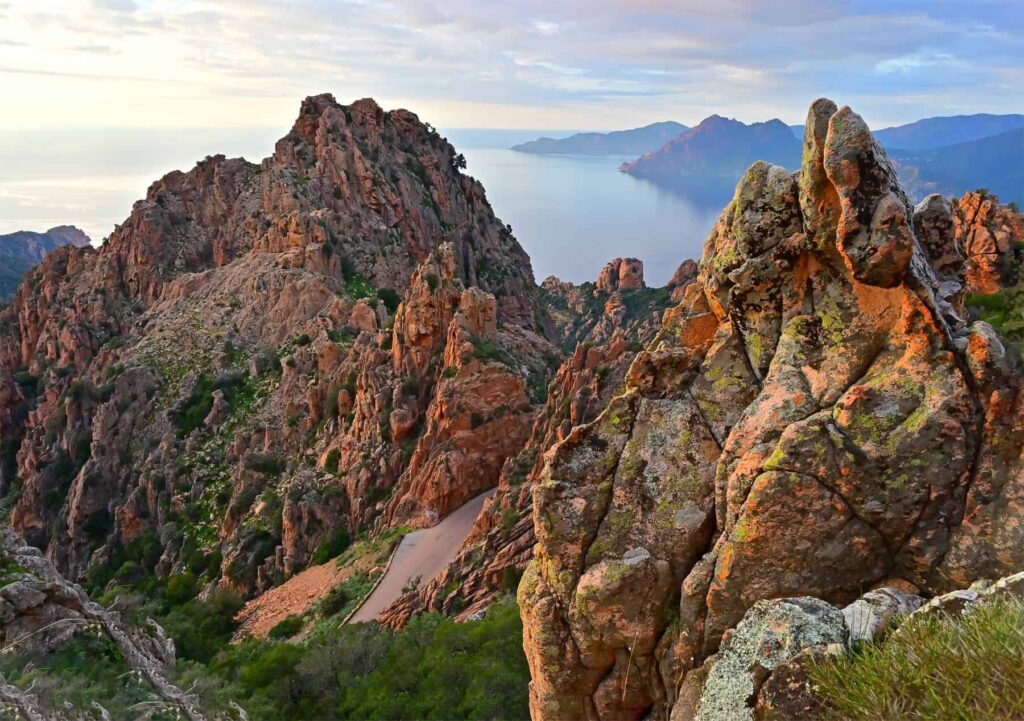
9. DON’T EXPECT FAST DRIVING SPEEDS
In Corsica, driving is never fast-paced. The island’s narrow roads, often hugging steep mountain slopes, naturally call for slower speeds. While official limits range from 50 km/h (sometimes even 30km/h) in towns to 80 km/h on rural roads, and up to 110 km/h on a few short stretches near Bastia and Ajaccio, you’ll rarely reach those numbers. Tight bends, constant elevation changes, and lack of visibility demand extra patience.
But slowing down isn’t a drawback here- almost every turn reveals another breathtaking view worth savouring. When planning trips, always allow more time than your GPS suggests, and even if locals seem to fly past, often cutting corners, it’s best to keep to a comfortable, steady and safe pace.
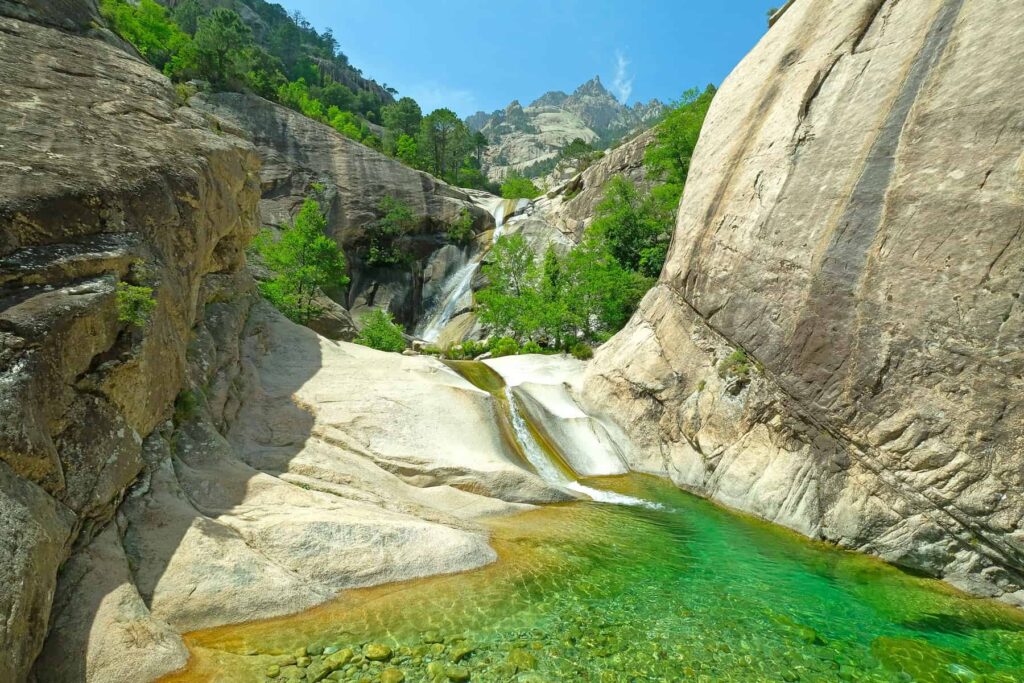
10. DON’T EXPECT UNIVERSALLY RELIABLE MOBILE COVERAGE
Mobile coverage in Corsica is generally stable in towns, with the major providers like Orange, SFR, Bouygues Telecom, and Free Mobile offering widespread 4G service. That said, the island’s rugged terrain means signal can quickly weaken or disappear in the mountains, canyons, or more remote rural areas, so be prepared for dead zones while you travel. While 5G has made its way to the island, it’s still largely limited to urban centres like Ajaccio and Bastia. Sometimes, even in places where you might expect a strong reception, such as Aleria, coverage can often be patchy.
In my experience, Orange and SFR tend to provide the most consistent service, though they complement each other in different regions. For travellers heading into the mountains, it’s wise to plan for limited connectivity- I often carry a satellite communicator, such as a Garmin inReach, as a safety backup when hiking.
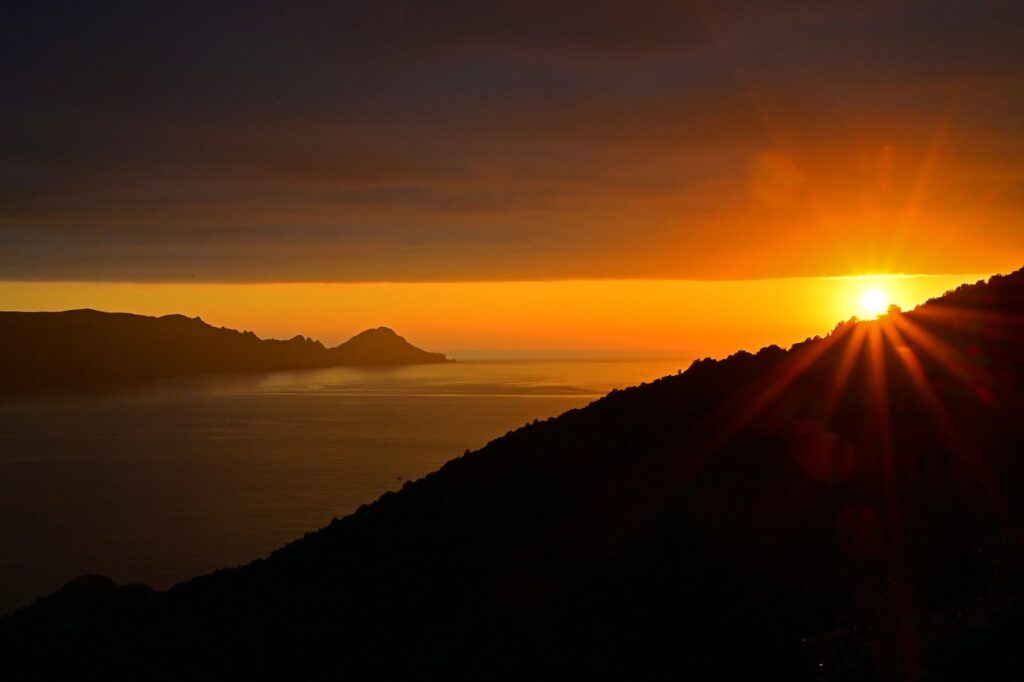
11. DON’T EXPECT BUDGET-FRIENDLY PRICES
To put it simply, Corsica is a fairly expensive destination. Prices across the island are generally higher than in mainland France, largely due to its location and the extra costs of transporting goods and services. Accommodation, dining, and even groceries come at a premium, especially in the busy summer months when demand is at its peak. Car rentals can be reasonably priced if booked well in advance, but last‑minute hires are notoriously costly. Coastal accommodation is almost always pricey, while inland villages often offer more affordable and good‑quality options.
Despite the higher costs, the majority of visitors agree that Corsica is well worth it– the island offers a quality of living that feels luxurious, a food culture rich in fresh local products, and the invaluable benefit of being far from mass‑tourism crowds.
Travelling outside the peak season is the easiest way to reduce expenses, and there are options to suit different budgets, from simple campsites and residence-style rentals to boutique hotels. The golden rule is to book early, as planning ahead can save you a significant share of your holiday budget.
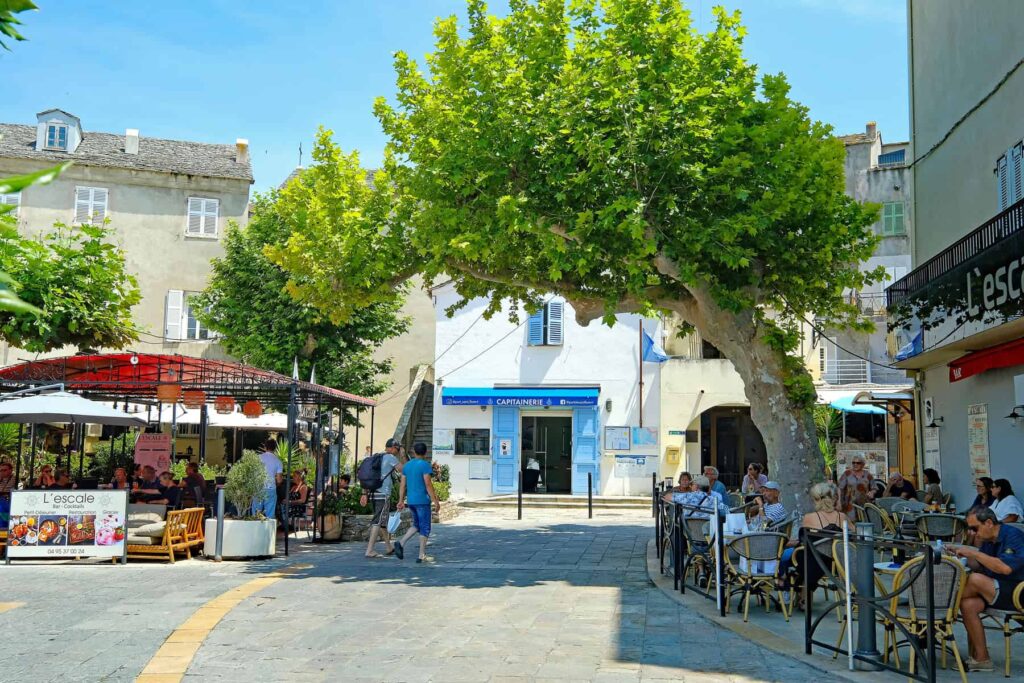
12. DON’T EXPECT UNIVERSALLY ACCEPTED CARD PAYMENTS
In Corsica, debit and credit cards are widely accepted in shops, restaurants, and bars, particularly in bigger towns and popular tourist areas. Visa and MasterCard are the most commonly used, making cashless payments straightforward for most visitors.
That said, in smaller villages, family‑run businesses, local markets, or mountain refuges, cash is often the only option. For this reason, I strongly advise you to always keep some euros on hand, for small purchases as well as tipping, which isn’t obligatory but always appreciated. ATMs are available in most towns and cities, but they can be scarce in more remote areas, so it’s best to plan ahead before heading into the countryside.
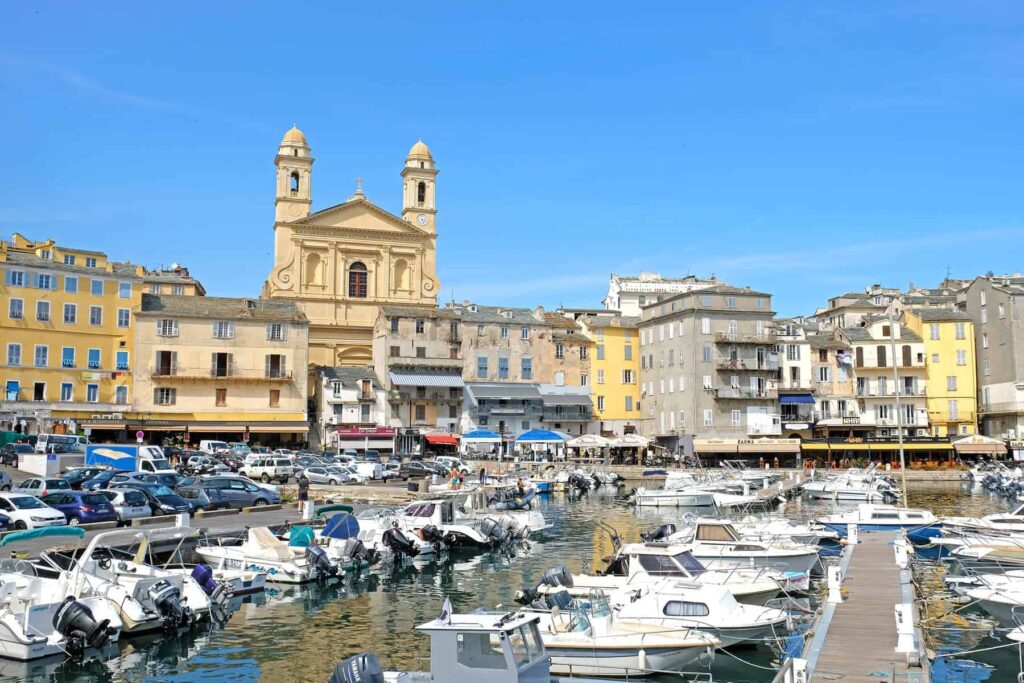
13. DON’T EXPECT CONTINUOUS OPENING HOURS
As in much of the Mediterranean, continuous opening hours are rare in Corsica. Most shops, services, and businesses close for a midday break, typically from around 12:00 p.m. to 2:00 p.m., before reopening until the early evening. On Sundays in low season, you’ll usually find little open apart from markets or essential services. In summer, however, larger towns and tourist resort areas often keep shops open throughout the week to accommodate visitors’ needs.
Markets generally take place in the mornings and wrap up by midday, so it’s best to arrive early. This rhythm is especially strict in smaller villages, where midday closures and early evening hours are firmly observed, something to keep in mind when planning your shopping, a visit to the post office or a bank.
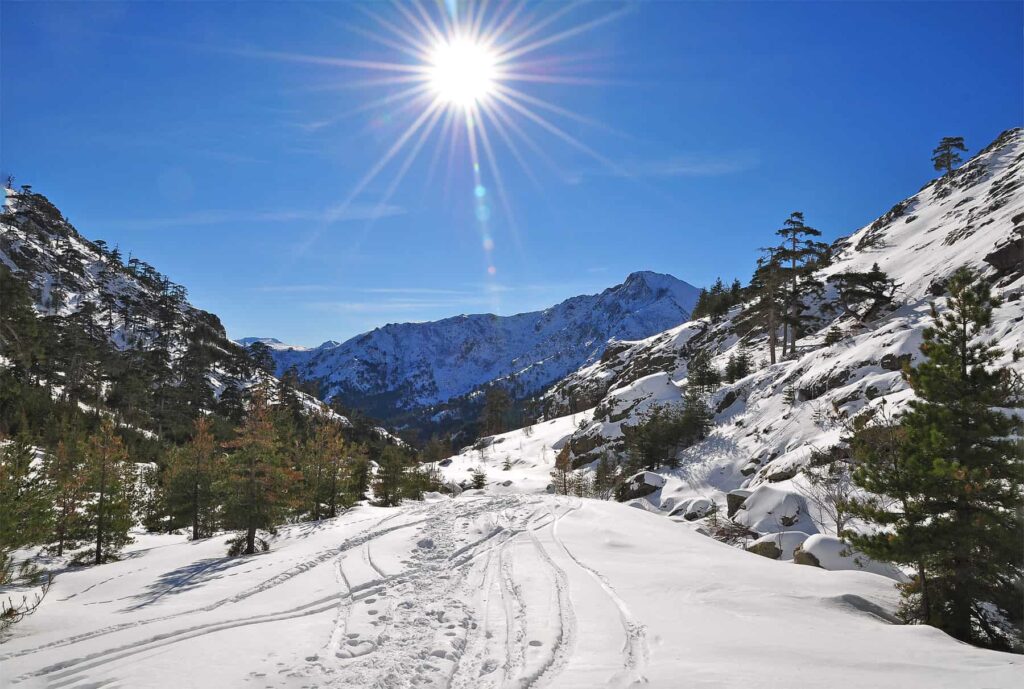
14. DON’T EXPECT FULL TOURIST INFRASTRUCTURE IN WINTER
If you wish to visit Corsica in winter, bear in mind that its tourist infrastructure is going to be far more limited than during the busy summer months. Many hotels, restaurants, and attractions close altogether or operate on reduced hours. Public transport services are also scaled back, with fewer buses, flights, and ferry connections. Some typically touristy towns, such as Bonifacio or Calvi, turn very quiet or nearly deserted, while others, like Bastia or Ajaccio, continue to bustle with their usual everyday activity.
But the island itself remains just as appealing- coastal hiking trails, natural sites, and picturesque villages invite exploration, and with fewer visitors around, you will experience a calmer, more authentic atmosphere. In the mountains, small ski resorts open as soon as the snowfall cover allows, offering the option of winter activities with sunny views of the Mediterranean.
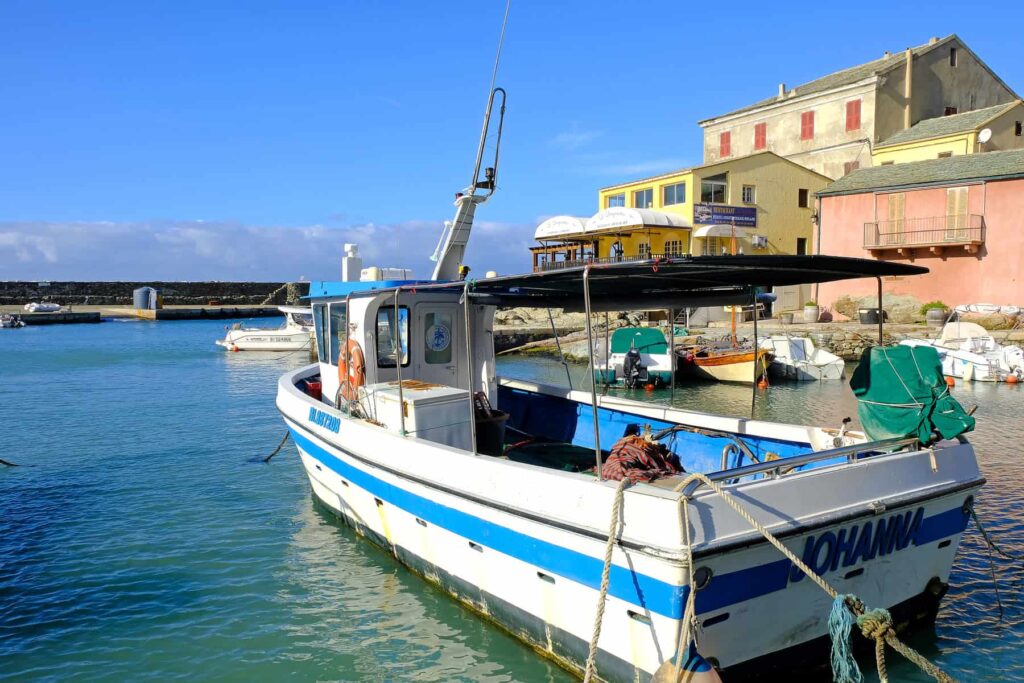
15. DON’T EXPECT SEAFOOD-DOMINATED CUISINE
While fish and shellfish are certainly part of Corsican cuisine, especially in the coastal regions, the island’s gastronomy is far from seafood‑dominated. In fact, traditional Corsican cooking is a balanced blend of land and sea specialities.
In the mountain areas, dishes often centre around meats like wild boar, lamb, veal, and pork, prepared with fragrant herbs and chestnuts. Cheese also plays an important role, with brocciu, a soft, fresh variety, being the most widely used in both savoury and sweet recipes. On the coast, you’ll find excellent fish and seafood, from sea bream and red mullet to langoustines, mussels and oysters, although limited stocks make marine dishes fairly pricey.
At its heart, Corsican cuisine is rustic and pretty straightforward, focused on local produce such as cured meats, rich cheeses, olive oil, and regional wines, making its culinary experience different from what you might expect from a Mediterranean island.
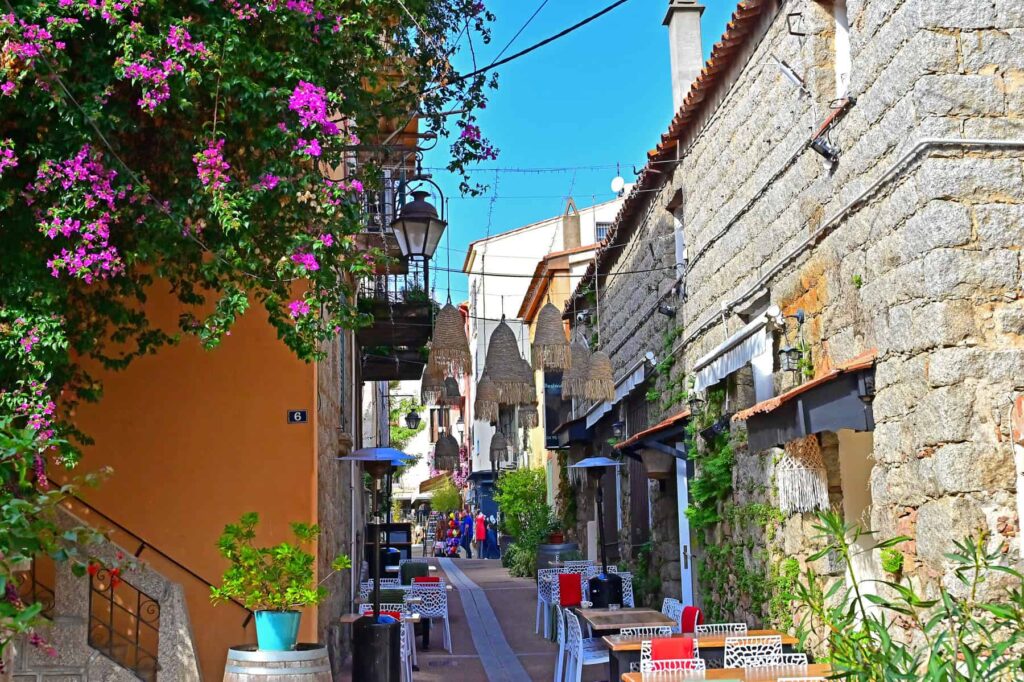
16. DON’T EXPECT MCDONALD’S RESTAURANTS
You may be surprised to find out that Corsica is the only metropolitan region of France without a single McDonald’s restaurant within its territory. Residents are, in fact, quite boastful about it, being attached to their own culinary traditions that encourage the support of local producers.
This deep‑rooted pride in regional food culture makes global fast‑food brands, with their standardised menus, far less welcome, although chains like Quick and Burger King have managed to adapt and establish a modest presence.
Corsica’s isolated position, with only a small population, logistical hurdles and higher supply costs, is also a factor, making menu prices rise by around 30% and the brands’ usual business model far less sustainable. For many visitors, the absence of global giants is a pleasant revelation that highlights the islanders’ commitment to preserving a unique food identity, supporting small businesses over mass‑made products.
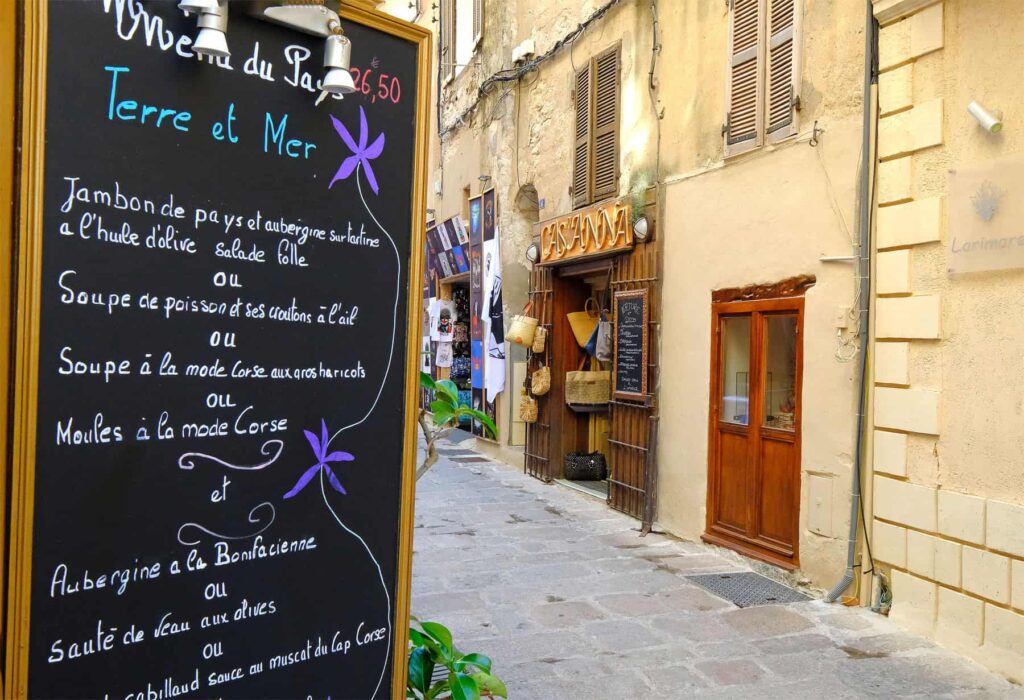
17. DON’T EXPECT WIDESPREAD ENGLISH FLUENCY
Unfortunately, English is not widely spoken in Corsica, particularly once you step outside the main tourist areas. In larger towns and coastal resorts, staff in hotels, restaurants, and shops, who often arrive for the season from continental France or other countries, usually have a sufficient level of English. Beyond that, however, daily life is carried out in French and sometimes Corsican, while many seniors in rural regions may not speak English at all.
For you, it may mean some challenges when communicating with the locals in remote locations; therefore, learning a handful of simple French phrases really helps. Residents will appreciate your efforts and will be happy to assist you with your needs. Tourism is vital to the Corsican economy, and everyone is used to welcoming guests. Start with a polite bonjour and keep a translator app handy- you’ll do just fine.
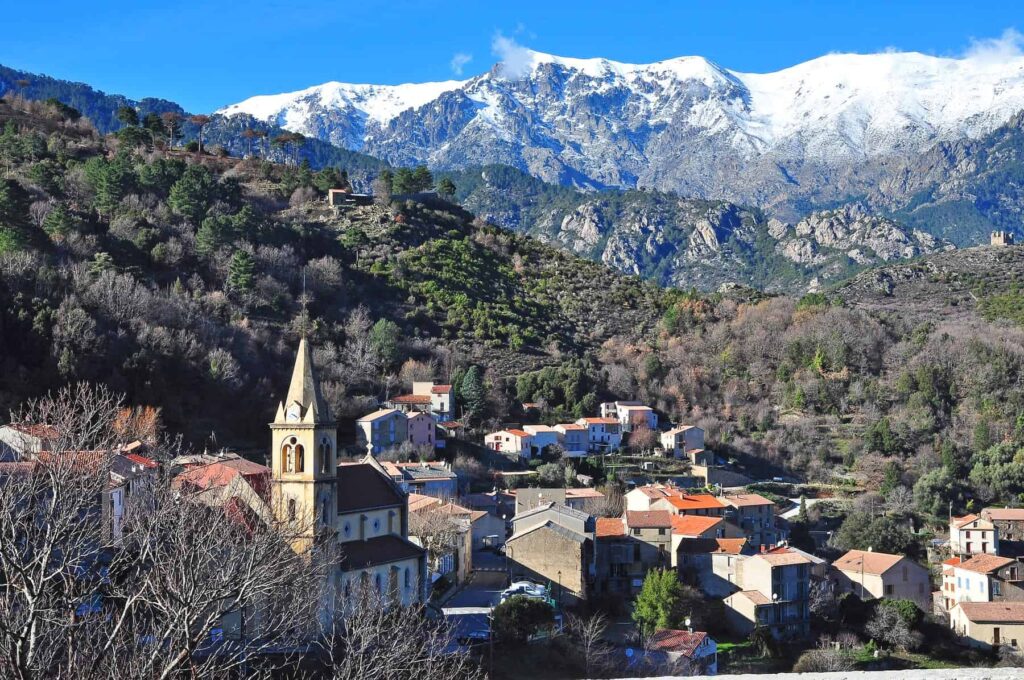
18. DON’T EXPECT MAFIA-RELATED DANGERS
Corsica is generally considered a very safe destination for visitors, with low levels of petty crime such as pickpocketing or theft. It’s a secure place for families and solo travellers, where you will enjoy evening strolls with peace of mind.
However, as some may know, the island also has a long-standing reputation for organised crime, often referred to as the Corsican mafia, famously depicted in films, most notably in ‘The French Connection’ (1971), a classic directed by William Friedkin, featuring Gene Hackman, Roy Scheider, and Fernando Rey.
While incidents of mafia‑related violence sometimes occur on the island, they are almost entirely confined to local rivalries or political circles and have no impact on the arriving guests. Local authorities prioritise protecting Corsica’s tourism industry, which is a vital part of the island’s economy. For visitors, just as for residents, daily life remains peaceful and secure, whether you choose to explore towns, hike in the mountains, or relax by the coast.
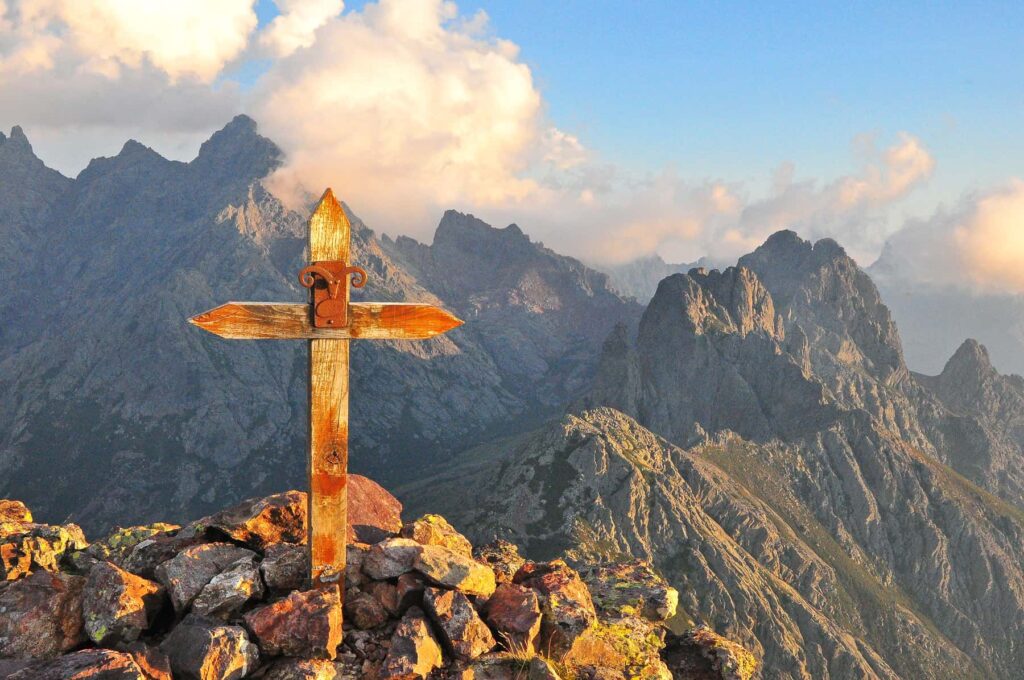
19. DON’T EXPECT PREDICTABLE WEATHER
In its coastal areas, Corsica enjoys a classic Mediterranean climate, making its weather fairly stable. Summers are hot, dry, and sunny, with temperatures often rising above 30°C, perfect for beach days and outdoor exploration. Spring and autumn bring temperate conditions, pleasant warmth, and the occasional shower, while winters are marked by a mix of sunny skies and periods of rainfall.
But as most of Corsica’s territory is hilly or even mountainous, the weather changes considerably with higher altitudes. Even in July and August, the upper valleys of Asco or Restonica are marked by lower temperatures, granting a cooling break from the coastal heat. Storms and flash floods are not infrequent, and as of December, you may even expect a decent snow cover, creating suitable conditions for skiing or snowshoe walking.
Winds also play a part in shaping Corsica’s interesting climate profile. Local gusts such as the Tramontane and Mistral can bring sudden shifts in temperature or bursts of very strong wind. Keep this in mind when preparing your Corsica travels, always adding additional clothing items to protect you from unexpected weather surprises.
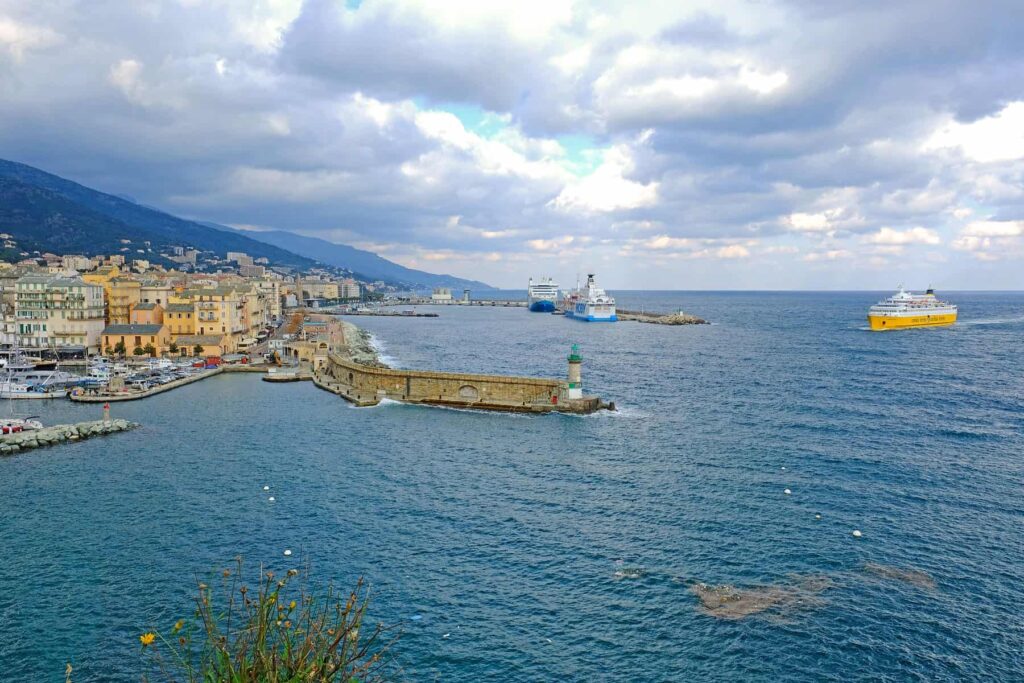
20. DON’T EXPECT CONVENIENT YEAR-ROUND TRAVEL CONNECTIONS
To get to Corsica, you have to either fly or take a ferry. In peak season, services ramp up, and a solid network of air and sea connections makes accessing the island fairly straightforward. Four airports, Ajaccio, Bastia, Calvi, and Figari, receive regular flights from major European cities (check the destinations and dates list in this post).
Those arriving by sea from mainland France, Italy, or Sardinia dock in the ports of Ajaccio, Bastia, Porto Vecchio, Ile Rousse, Propriano or Bonifacio. Crossings are frequent and, depending on the route, take between 3 and 16 hours, with the choice of daytime or overnight sailings.
Things change quite a bit when the low season arrives. Outside of the busiest months, particularly in winter, services become sparse, with a considerably limited number of connections, now more tailored to local residents’ needs rather than tourists. To reach Corsica in January or February, you will face fewer route options and reduced operating frequency. On the plus side, with less demand, ticket prices drop sharply, often costing half or even less than peak season rates. For budget-friendly travel, winter is a great time to go, just be sure to check the schedule and book ahead.
VISIT CORSICA’S HIDDEN NATURAL POOLS – GRAB YOUR GUIDE !
TRAVELLER’S COMPANION FOR A TRIP TO CORSICA – GRAB YOUR EBOOK!
33 Natural Pools and Waterfalls in Corsica
Descriptions – Directions – Coordinates
YOU MAY ALSO LIKE
- Top 11 most beautiful places in Corsica
- Best things to do in Ajaccio in one day – the complete guide
- What to avoid in Corsica – 11 common mistakes
- Where to stay in Corsica – best places and areas for your visit
- Best places to stay in Corsica for couples
- Renting a car in Corsica – complete guide for visitors
- Corsica – where to go and what to do
- Visiting Corsica – how to get there
- Is Corsica an expensive travel destination – money guide for visitors
- Getting around Corsica – do you need a car?
- Top 3 destinations for a car-free holiday in Corsica
- Corsica or Sardinia? Find your dream Mediterranean escape
- Best time to visit Corsica
- Is Corsica a safe place to visit – travel advice and tips
- Driving in Corsica – tips and scenic routes ideas
- Visiting Corsica in winter – the ultimate travel guide

